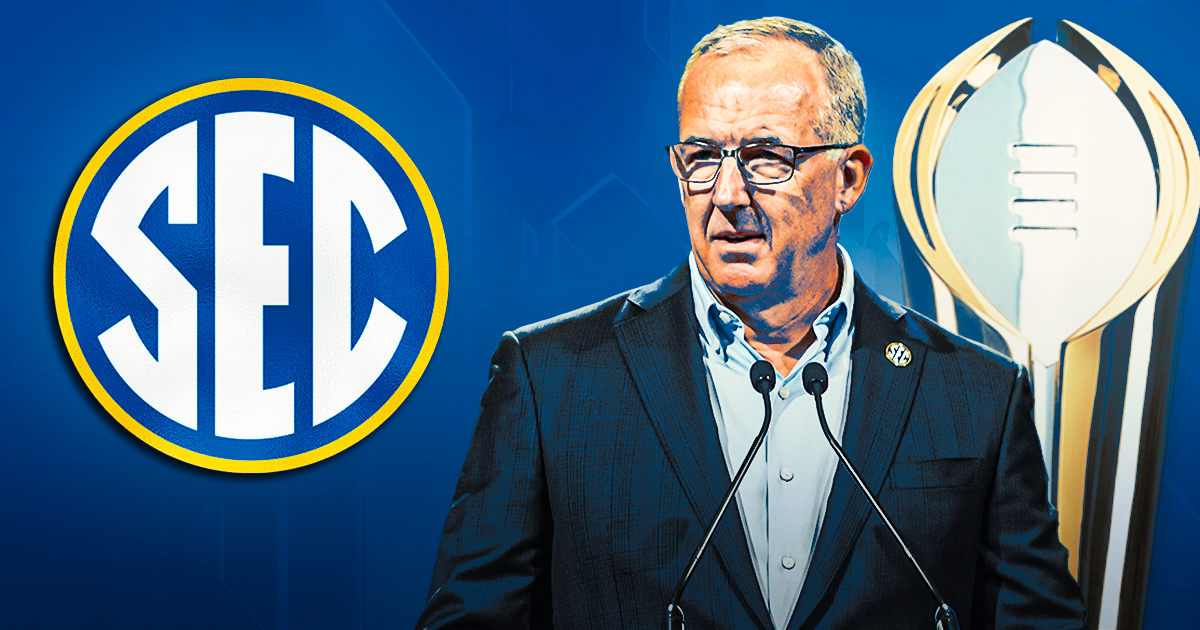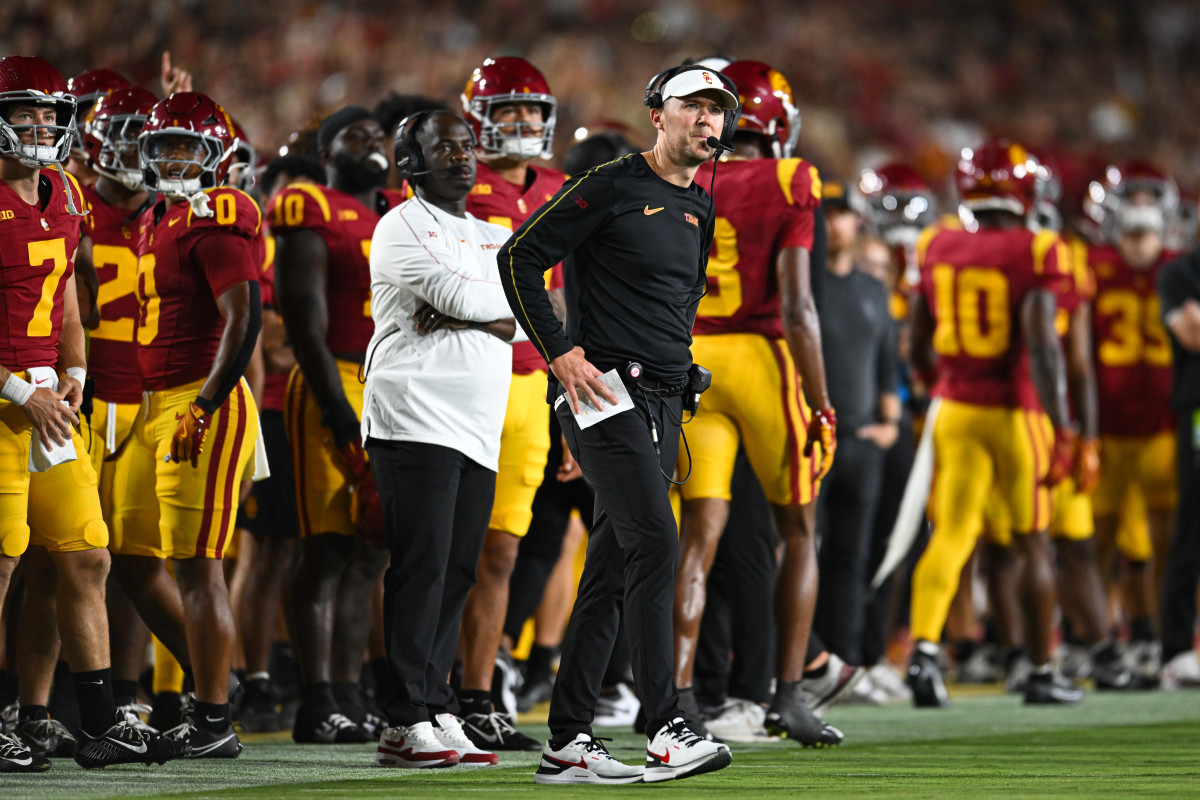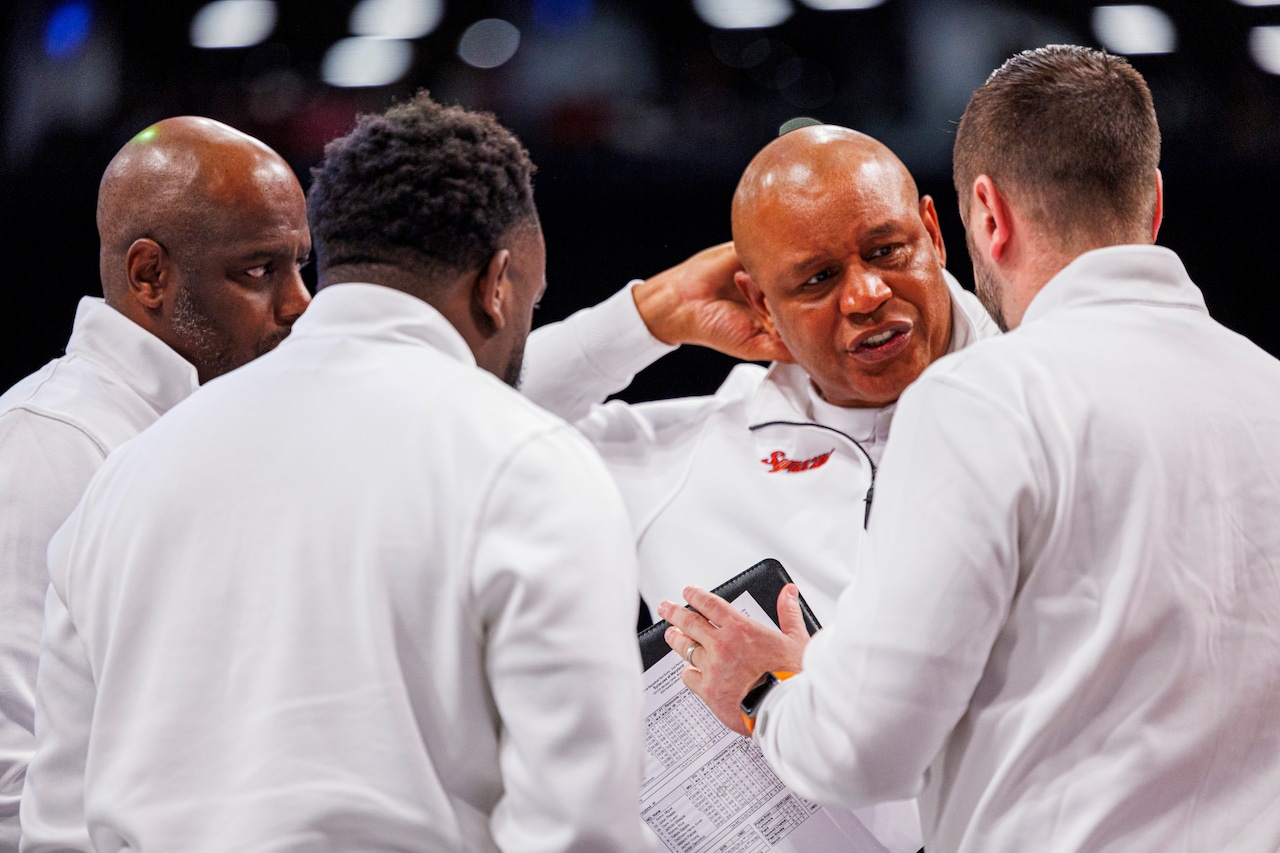White House officials said that President Donald Trump‘s administration is “considering an executive order that could increase scrutiny of the explosion in payments to college athletes” since 2021, after Trump met with former college football coach Nick Saban. Saban “talked about ‘NIL’ deals with Trump, telling the president how he believed the influx of money had damaged college sports.” The pending House settlement would allow schools to pay athletes directly from the billions of dollars in revenue. Sources said that Trump “said he agreed with Saban and would look at crafting an executive order.” Sources added that Trump “told aides to begin studying what an order could say.” A source said that Saban “didn’t propose ending NIL but ‘reforming’ it.” The source added Saban “described how it was causing an uneven playing field” with an “arms race among powerhouse schools.” The NCAA declined to comment on a potential executive order (WALL STREET JOURNAL, 5/2).
NIL
President Donald Trump eyes executive order on NIL
President Donald Trump‘s administration is “considering an executive order that could increase scrutiny of the explosion in payments to college athletes.” Getty Images White House officials said that President Donald Trump‘s administration is “considering an executive order that could increase scrutiny of the explosion in payments to college athletes” since 2021, after Trump met with […]

NIL
Greg Sankey reaffirms his stance of no automatic bids for College Football Playoff
As SEC commissioner, Greg Sankey remains among the most influential voices in college football, and a preeminent decision-maker when it comes to how the future of college athletics will look. It’s because of that authority that Sankey’s opinion about the next iteration of the expanded College Football Playoff carries more weight than almost any other. […]

As SEC commissioner, Greg Sankey remains among the most influential voices in college football, and a preeminent decision-maker when it comes to how the future of college athletics will look. It’s because of that authority that Sankey’s opinion about the next iteration of the expanded College Football Playoff carries more weight than almost any other.
Coming out of last week’s 2025 SEC Spring Meetings in Destin, Fla., Sankey put the league’s support behind a Big 12-backed “5+11” 16-team model for the expanded CFP that features 11 at-large bids along with the five highest-ranked conference champions. It was in direct opposition to the Big Ten-backed “4-4-2-2-1” 16-team model that granted four automatic bids for both the Big Ten and SEC and two apiece for the ACC and Big 12, which the latter two leagues have thoroughly rejected.
For his part, Sankey made it clear he’s never been in support of “automatic bids.”
“I’ve been one that said over time, I’d give no allocation. … I’d just make it the 12 best teams. And I was clear on that,” Sankey said on Monday’s Dan Patrick Show on Peacock. “Now, when we get into rooms, we make political compromises if you will … to achieve an outcome. … But we spent so much time expanding and working through our own little side arguments — about teams, and aw we can’t do this, we need this, you’ve got to protect this bowl game or that bowl game — that we never went back to the essence of decision-making, which is how are teams selected.
“As everyone relocated over the last 4-5 years, do the analyses that existed and worked for the four-team playoff in 2014 still have the same relevance? And we’re behind that curve in my opinion. That’s why other ideas are introduced and considered. And we’ve looked at ideas,” Sankey continued before pivoting to a repeated criticism of last season’s CFP format. “You know this allocation of what’s called automatic bids, that’s such a harsh term. I think allocations is … I like that word. Because we’ve already allocated. Look at last year, we had two teams not in the Top 4 that get to move up because of the political compromise. So we have a team outside the 12 that moves in and then the teams that are displaced look around and say, ‘Hey wait a second. That doesn’t make sense any longer.’ That introduces the questions around should that model continue or should that allocation expand where other teams are brought in?”
Automatic bids — or “allocations” as Sankey prefers — have been widely repudiated by fans and college football coaches alike since the Big Ten pushed it during their Spring meetings early last month.
During the ACC Spring Meetings last month, Miami coach Mario Cristobal publicly rejected the “4-4-2-2-1” proposal three weeks ago: “Granting spots, that makes zero sense. Football has never been about gifting. It’s about earning.”
Added Pitt‘s Pat Narduzzi: “I think you should earn your way in. It comes down to the image of the Big Ten and SEC and where they are and there’s a lack of respect for the ACC. I don’t like it.”
In at least that respect, the SEC and the ACC are in full agreement.
NIL
Buying an NCAA Title – Welcome to the New Age of College Athletics
Today we’re talking about softball and NIL. Last week in this space, I opined about the intrigue us college sports fans were getting from the 2025 NCAA Softball Championship. Mainly due to the fact that Texas Tech – a perennial afterthought of a program – spent over $1 million in NIL packaging to bring the […]

Today we’re talking about softball and NIL.
Last week in this space, I opined about the intrigue us college sports fans were getting from the 2025 NCAA Softball Championship. Mainly due to the fact that Texas Tech – a perennial afterthought of a program – spent over $1 million in NIL packaging to bring the nation’s best pitcher and possibly overall player to their team from Stanford last offseason.
Surely, a school couldn’t simply buy their way into an NCAA title, could they?
Don’t look now, but Texas Tech is about to show it can be done, indeed.
NIL
Eight CU Baseball/Softball Student-Athletes Named CSC Academic All-District
Three members of the Clarkson University Baseball team and five more from the Clarkson University Softball program were rewarded for their excellence on the field and in the classroom as the 2024-25 College Sports Communicator Academic All-District teams were announced. The 2025 Academic All-District® Baseball/Softball Teams, selected by College Sports Communicators, recognize the nation’s top student-athletes […]

The 2025 Academic All-District® Baseball/Softball Teams, selected by College Sports Communicators, recognize the nation’s top student-athletes for their combined performances in athletics and in the classroom. The CSC Academic All-America® program separately recognizes honorees in four divisions — NCAA Division I, NCAA Division II, NCAA Division III and NAIA. Selections must have a 3.50 grade-point average or better with at least sophomore athletic and academic standing to be considered. Additionally, nominees must compete in at least 90% of athletic competitions, or start 66% of a program’s games.
From the Golden Knights’ baseball team, sophomores Seth Albert, Jacob Shriley, and Beau Vardion received the honor, while seniors Elizabeth Greco, Zoey Kovach, Emma Sabourin, and Elissa Uveino, as well as sophomore Isabel Haspil, earned the nod for the Clarkson Softball program.
Seth Albert, a Financial Information and Analysis major, spent most of the season in the leadoff spot for the Golden Knights, scoring 26 runs and ranking second on the team with nine stolen bases in 11 tries.
Jacob Shirley, a Mechanical Engineering major, tossed 38 innings for the Knights striking out 25 along the way, making six starts and four relief appearances.
Beau Vardion, a Data Science major, was named a d3baseball.com All-Region selection and was also picked as a Liberty League All-Star after a breakout season in which he led the team with a .382 average and a .657 slugging percentage thanks to four home runs and 32 RBI.
Elizabeth Greco, a Civil Engineering major, ranked third on the team with 15 walks and drove in 15 runs thanks to 18 hits in her senior campaign for the Knights.
Isabel Haspil, an Aerospace Engineering and Mechanical Engineering double major, set a program record for free passes in her sophomore year, reaching base on 19 walks to help deliver a .333/.441/.465 batting line, scoring 25 runs and driving in 18 more.
Zoey Kovach, an Engineering and Management major, finished off her career with another Liberty League all-star campaign, her third in four seasons, while also being named NFCA All-Region for the second time. She hit .363/.397/.487 and tied for the team lead with 41 hits.
Emma Sabourin, a Chemical Engineering major, was a standout in center field once again as one of the top defenders in the league, while also contributing on offense with 17 runs scored and 14 more driven in.
Elissa Uveino, a Mechanical Engineering major, ended up hitting .316/.374./357 with a team-best seven stolen bases while also scoring 21 runs. She closed her career with a .325 batting average, one of only eight players with at least 150 at bats to do so for the Knights.
NIL
How Texas Tech Put Together Its First Ever WCWS Run
How Texas Tech Put Together Its First Ever WCWS Run Privacy Manager Link 0

NIL
College Football Insider Names Big Ten Program as ‘Powerful’ as any in NIL Era
College Football Insider Names Big Ten Program as ‘Powerful’ as any in NIL Era originally appeared on Athlon Sports. As NIL continues to unfold across the land of College Sports, one insider believes that USC can be as “Powerful” as any team in the NIL Era. Advertisement On Monday, on3’s Wiltfong Whiparound show, Steve Wiltfong […]

College Football Insider Names Big Ten Program as ‘Powerful’ as any in NIL Era originally appeared on Athlon Sports.
As NIL continues to unfold across the land of College Sports, one insider believes that USC can be as “Powerful” as any team in the NIL Era.
Advertisement
On Monday, on3’s Wiltfong Whiparound show, Steve Wiltfong said no team in college football is more equipped to handle recruiting in the NIL Era than USC.
Right now, the Trojans are ranked number one in the country for the 2026 recruiting class, and they haven’t shown any signs of slowing down after signing tight end Mark Bowman, out of Mater Dei High School in Santa Ana.

Southern California Trojans head coach Lincoln RileyGary A. Vasquez-Imagn Images
“There’s a lot of excitement around this program,” Wiltfong said. “And in the NIL era, USC is as powerful as any program in the country right now.”
Bowman is considered the number one tight end recruit in the country and still has to suit up one more season at Mater Dei before he arrives on campus for the Trojans, but he is already being compared to former Georgia and current Raiders tight end Brock Powers.
Advertisement
While the exact numbers remain unknown, Scott Schrader of WeAreSC.com wrote that Bowman is expected to make $8-10 million in NIL within three years of playing.
With the addition of Bowman, USC now has two five-star recruits in this recruiting class. The other five-star recruit is offensive tackle Keenyi Pepe out of IMG Academy. The Trojans also have 14 four-star recruits to have committed as well.
USC’s class of 2026 also has 27 total commitments, 13 of which are from the Southern California area.
Related: USC Legend Attempting to Prevent 4-Star From Choosing Alma Mater
This story was originally reported by Athlon Sports on Jun 4, 2025, where it first appeared.
NIL
Adrian Autry on Syracuse basketball’s NIL budget: ‘I felt like we could compete’
Syracuse, N.Y. – In putting together a roster for the 2025-26 season, Syracuse coach Adrian Autry and his staff hit the transfer portal with more preparation and more money to pay players than a year ago. Of Syracuse’s six transfers, four come from schools in Power-Five conferences. Five, if one counts Nate Kingz, a wing […]

Syracuse, N.Y. – In putting together a roster for the 2025-26 season, Syracuse coach Adrian Autry and his staff hit the transfer portal with more preparation and more money to pay players than a year ago.
Of Syracuse’s six transfers, four come from schools in Power-Five conferences. Five, if one counts Nate Kingz, a wing from former Pac-12 member Oregon State, in that group.
The Orange’s transfers include William Kyle, a center from UCLA; Tyler Betsey, a forward from Cincinnati; Ibrahim Souare, a center from Georgia Tech; and the crown jewel of the class, Nait George, who led the ACC in assists last season as a sophomore at Georgia Tech.
“We got who we got,’’ Autry said of SU’s transfers. “Did we beat some people? Yes. I felt like we could compete. I didn’t feel like we lost anyone because we couldn’t afford them.’’
Did that happen a year ago? Autry was asked.
“Um, probably,’’ Autry said.
A year ago, Syracuse went into the transfer portal with limited financial resources.
As a result, Autry and his staff either passed on or were out-bid for several high-profile transfers. Of the four transfers who eventually committed to Syracuse, three came from mid- or low-major schools.
Syracuse’s budget wound up being the subject of much scrutiny and conversation as the Orange went 14-19 this past season.
In a wide-ranging interview with syracuse.com | The Post-Standard last week in his office at the Carmelo K. Anthony Basketball Center, Autry said the Orange basketball program had more money at its disposal this year thanks in part to the revenue-sharing plan that is a result of the soon-to-be finalized settlement in the House v. NCAA case. The settlement still needs formal approval and is expected to take effect July 1.
“I think this year with the anticipation of the revenue sharing, I thought that helped,’’ Autry said. “I think it helped everybody, but it definitely helped us.’’
Autry declined to give exact financial details of how much money Syracuse had available to spend on players, but it seems clear Syracuse is operating at a different level, albeit still a level below the country’s biggest-spending college basketball programs.
“To answer your question,’’ Autry said, referring as to whether SU lost out on transfers last year due to a lack of money, “I do think probably the year before, we lost a couple of guys or just went after some different types of guys because it was just a different setup.’’
In addition to the House v. NCAA case, which will place a $20.5 million cap on how much schools can directly pay athletes, Autry also acknowledged that some schools with heavily funded NIL collectives were able to capitalize on the NCAA’s relaxation of NIL rules quicker than Syracuse.
“You hear about these (schools) with unbelievable collectives,’’ Autry said. “They were able to operate faster because you need to have money.’’
Autry also indicated SU general manager Alex Kline, who was hired last June to aid the Orange’s efforts in the transfer portal, helped prepare Autry and his staff identify players they would target in the transfer portal.
“This year we rolled into the off-season,’’ Autry said. “That’s why you see everyone hiring general managers now because when you try to do it as a head coach and your assistant coaches, you’re focused on finishing up the season.
“This year we literally rolled in.’’
Contact Mike Waters anytime: Email|Twitter
-

 College Sports2 weeks ago
College Sports2 weeks agoPortal Update – Basketball and Gymnastics Take Hits
-

 Rec Sports3 weeks ago
Rec Sports3 weeks agoThe Program, a New Basketball Training Facility, Opening in Greenpoint This September
-

 College Sports2 weeks ago
College Sports2 weeks agoPortal Update – Basketball and Gymnastics Take Hits
-

 Professional Sports2 weeks ago
Professional Sports2 weeks agoJon Jones answers UFC retirement speculation as fans accuse champion of 'holding the belt …
-

 NIL1 week ago
NIL1 week ago2025 NCAA Softball Tournament Bracket: Women’s College World Series bracket, schedule set
-

 Health2 weeks ago
Health2 weeks agoBYU women's basketball guard injures ACL twice
-

 Youtube2 weeks ago
Youtube2 weeks agoXavier Legette taught Marty Smith his signature celly
-

 Motorsports2 weeks ago
Motorsports2 weeks agoWhy IHOP Rode With Dale Earnhardt Jr. In Amazon NASCAR Debut
-

 Health3 weeks ago
Health3 weeks agoNew training facility opens in Reading for athletes' mental and physical advancement
-

 High School Sports2 weeks ago
High School Sports2 weeks agoToday in the MHSAA



































